∞ Originally published in the Vancouver Province and Edmonton Journal, November 16, 2008. ∞
I’m soaking in the bright South African sun, relaxing on vacation, when, suddenly, four dangerously handsome bachelors sidle up and give me the once over. They’re gorgeous and they know it. I’m in awe of their muscular beauty: powerful shoulders, tawny manes, deep brown eyes. One approaches, clearly on the prowl. I’m travelling solo, yet not looking for his kind of company. But our eyes meet and I find his golden gaze mesmerizing. My heart stops. I hold my breath. Then he opens his mouth. And roars.
A brush with lions in the bush is one of the highlights of any African safari — one of the highlights of life, actually — but far from South Africa’s only thrill.
This wildlife trek in Greater Kruger Park is my first safari, and I’ve taken an unusual approach. Most are booked in big groups, but I’m going it alone: just me and the animals — sometimes too close for comfort.
Kruger Park is the country’s premier wildlife preserve. At two million hectares (the size of Belgium), it’s one of the largest national parks on earth. Established in 1898 by president Paul Kruger, it boasts astonishing biodiversity: 147 species of mammals, 500 species of birds, 300 fish and 100 reptile species. As of 2004, some 32,000 zebras, 25,000 buffalo, 13,500 elephants, 9,000 giraffes, 5,000 kudus (antelope), 3,000 hippos, 350 black rhinos and 300 cheetahs called Kruger home, and 1.3 million people a year come to see them.
I’m headed to Sabi Sands, one of the private reserves that shares open borders with the public park to form Greater Kruger Park. On private reserves guides lead drives off-road into the bush to track animals up close (not permitted in the public parts of Kruger.) Sabi Sands, where I stayed at the intimate Arathusa Lodge, is one of the best places on earth for seeing leopards and lions — to wit my encounter with a pride of lions on my first day.
On day two, we go leopard spotting, roaming across savannahs in our tank-like Land Rover in search of the elusive cat. Rifos Mnisi, our Shangaan tracker, points to paws in the dust — the higher the ridges in the prints, the fresher they are. We’re in luck. One passed not long ago.
Jason Bagg, a ranger with an infectious love of nature (among his factoids: leopard urine smells like popcorn; you can tell a lion’s age by the colour of its nose) picks up his CB radio to pinpoint a location with other guides. And we’re off, crashing through underbrush. We pull up within metres of a young male leopard hiding under a jackalberry tree with a limp impala in his jaws. His green eyes flash and he hisses and snarls, warning us away from his kill. In a heartbeat, he could leap into our truck. But our (unarmed, mind you) ranger assures us the diesel smell and size of our vehicle will ward off attack. As we watch, the leopard tears fur off his catch, then stands and tilts his head up — considering the best way to drag his prize into the tree to protect it from hyenas. We don’t wait for one to show up.
Over the course of three days, we saw each of the Big Five: buffalo, elephant, leopard, lion and rhino, so named for the level of danger they presented to hunters. But it was just the beginning. We watched a wounded hyena fight for his life, stumbled on a lone giraffe chewing his cud in the tree-tops, spied Burchell’s zebras hiding behind plains grass, laughed as a black rhinoceros wallowed in mud, saw lazy hippos popping up and down in lakes, caught herds of spooked impala springing across fields, and had a craggy wildebeest stare us down on a hill. Every day, there were herds of elephants cooling off with trunk-showers or snuffling up fruit from Marula trees.
Days began before dawn with a wake-up knock (no TVs or telephones here) and a rooibos tea before the first of the day’s two 3 1⁄2-hour game drives. In the cool mornings, we listen to bird calls together as the bush wakes up. It’s serene until we break for coffee and rusks (biscuits) in the bush, only to race back into our truck as a curious bull elephant emerges from the trees and starts sniffing our snacks. He proceeds to head butt our truck, his trunk reaching within inches of us. We quickly move on. On evening drives we break for sundowners (cocktails) and biltong (bush-meat beef jerky), watching sunset through branches of a baobab.
After sun sets, bush noises turn ominous and we’re startled when eyes glint in our headlamps.
Back at the lodge we enjoy hearty mase kombuis (Afrikaans for “mom’s kitchen”) meals served outdoors under a shaded deck built over the lake — bathing elephants provide entertainment. The white-washed, air-conditioned rondavels live up to any girl’s Out of Africa aesthetic: crisp white linens on mosquito-netted king-sized beds, mahogany armchairs and roll-top desks, verandahs with sweeping views of a lake where hippos emerge by moonlight, outdoor showers and deep soaker tubs that conjure Robert Redford standing by with shampoo. The 30-degree heat requires afternoon naps, dips in the pool and crisp glasses of Sylvaner over lunch. Evenings unfold with tales of sightings at the bar while sipping Amarula crème liqueur (made with Marula tree fruit). Three-course dinners (with ostrich steak entrees) are served in the boma, where tables are arranged around a campfire.
It’s hard to leave. But there’s more to see in South Africa than animals. This country of 48 million, twice the size of Texas, is home to a diverse people and landscape. Just a few hours from Kruger is Johannesburg (Jo’burg or Egoli for “City of Gold” in Zulu to locals).
The city has a bad reputation for crime, yet felt perfectly safe by day. The funky university district of Melville has hip shops and leafy streets that attract bohos. Newtown (the city’s cultural precinct) offers galleries and museums, including the Johannesburg Art Gallery and Museum of Africa. Nearby Soweto (South West Townships) was the site of the 1976 uprising that marked the start of South Africa’s struggle for freedom from apartheid. A guided tour takes you to the tiny bungalow Nelson Mandela once shared with wife Winnie. Around the corner is the site where 13-year-old Hector Pieterson was shot at a protest march against learning Afrikaans in school, sparking a violent two-year battle in the townships. The new Hector Pieterson Museum built nearby provides context to the anti-apartheid struggle he came to symbolize.
Further afield, the Western Cape offers winery route tours through stately Stellenbosch and Franschhoek. Rewarding drives along the coastal Garden Route introduce travellers to beaches, forests and some of the most unique plants in the world, like the national flower, the giant king protea. Cape Town, shadowed by majestic Table Mountain (take the cable car to the 1087-metre flat-topped peak above the clouds), beckons with quaint colonial-era buildings in Bo-Kaap.
South of the city at dramatic Cape Point, you can swim with African penguins on Boulders Beach, go whale- watching, or visit Robben Island, where Mandela was imprisoned for nearly 20 years. On the east coast in KwaZulu-Natal, the Drakensburg (“dragon”) mountains lure hikers with stunning views, waterfalls and cave art, while the region’s largest city, Durban, boasts white sand beaches and scuba diving.
I haven’t seen it all, but I leave happy. Flying solo in South Africa went better than expected. Except, that is, for my date with the king of beasts. As often happens, it went downhill after he opened his mouth. My leonine crush basically yelled in my face. Not an auspicious beginning. He soon lost interest and turned back to his buddies, who were slavering over a juicy zebra steak. Turns out he wasn’t interested in me, he just wanted a meal. Typical male.
Elaine O’Connor tells travel tales at Whywanderlust.ca and on Twitter @Whywanderlust.
If you go:
- South Africa Tourism
- Kruger Park
- Sabi Sands
- Arathusa Game Lodge: Visitors can fly right in to the lodge — although the lodge’s airstrip may have to be cleared of wildebeest first — or the lodge will arrange a drive from Hoedspriut airport. Rates are from $250 Cnd. double occupancy to $315 Cnd. for singles, inclusive of all meals and game drives.
- Johannesburg Tourism
- Soweto
What to watch for:
- The Big Five: Buffalo, Elephant, Leopard, Lion and Rhino.
- The Little Five: Buffalo Weaver, Elephant Shrew, Leopard Tortoise, Ant Lion and Rhino Beetle.
- The Birding Big Six: Ground Hornbill, Kori Bustard, Lappet- faced Vulture, Martial Eagle, Pel’s Fishing Owl and Saddle-bill Stork.
- Top Five Trees: Baobab, Fever Tree, Knob Thorn, Marula and Mopane.

I’m a different kind of travel writer. I craft long-form, cover-worthy feature-length travel articles with style and substance. I tell travellers not just what to do, but why. Find out how to work with me.


